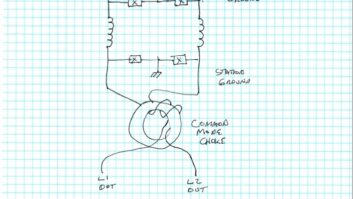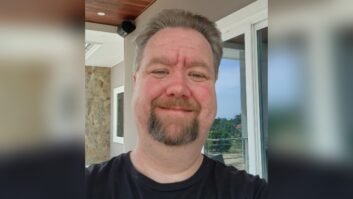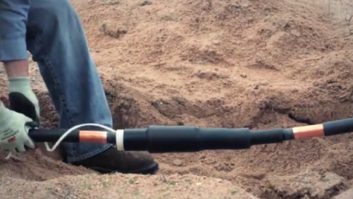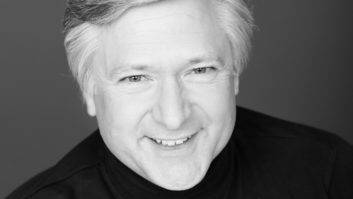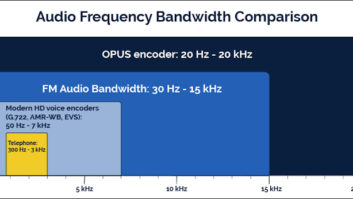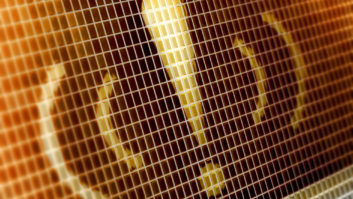Not long after I came to work for Crawford Broadcasting Co. in 1984, I was introduced to our most recent acquisition, KBRT in Los Angeles. The station was unique in that the transmitter site for the three-tower 10 kW 740 kHz AM was located on Santa Catalina Island, some “26 miles across the sea …” as described in the song “26 Miles” by the Four Preps, circa 1957.
The infrastructure for the station was different than anything I had ever seen. There was an audio feed from the Century City studio by an equalized “phone line,” which actually made the hop from mainland to island on a C-band terrestrial microwave link operated by the phone company.
The problem was the several miles long run of copper from the phone company facility in Avalon to the site, which was up near the Airport in the Sky. Whenever it would rain, the overhead line would develop a hum and sound terrible.
As a backup to the phone line (or maybe it was the other way around, I forget), there were not one but two Part 74 STL links. One was from a bluff at Ranchos Palos Verdes (RPV) to a hilltop at the KBRT site, and the other was from the Queen Mary, which was moored permanently at Long Beach. Both sites were fed with equalized phone lines from our studio. I remember that those STLs operated on grandfathered 930 MHz frequencies, which we kept for most of our remaining tenure on the island.
Between those three STLs, the station could generally keep program audio on the air. We had a full-time engineer living in company housing at the site, and it was a big part of his job to monitor and make sure we had a clean program feed at all times, switching as necessary and as conditions changed.
At some point, we lost the site at the Queen, and I moved that link to the top of Signal Hill in the Long Beach area. Then, when we moved our studios from Century City to Costa Mesa in 1987, I rented tower space from a cable TV head end a couple of blocks from the new studio and employed an “IF repeater” STL to get from studio rooftop to cable TV tower to the island.
As you can imagine, all those paths were clear. Nothing but oil derricks and ship traffic between the mainland and island antennas. The island transmitter site, by the way, was some 1,300 feet above sea level with a clear view of the mainland. Our typical receive signal was full scale, over 1,000 uV.
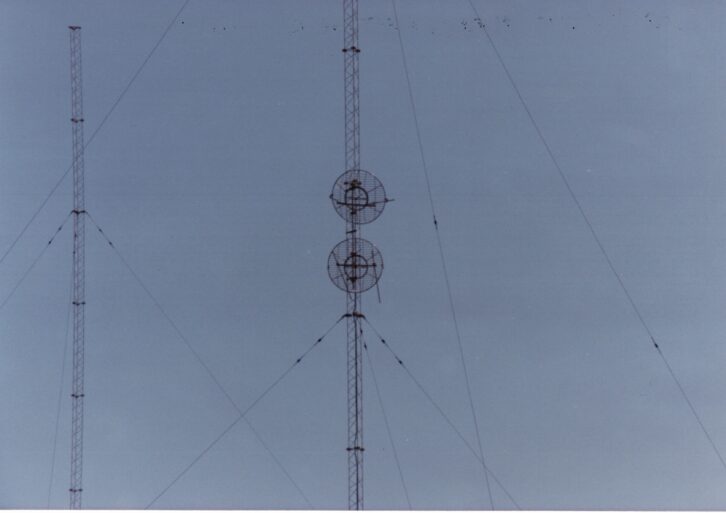
And yet, the over-the-air STL link was not all that reliable. When we would get marine layer over the Santa Barbara Channel, we would get deep fades and the recovered audio would get noisy or would squelch altogether.
My experience to that point was all with over-land 950 MHz STLs, so I really didn’t understand what was happening other than that there was maybe some refraction taking place that was “bending” the signal up or down so that it would miss the receive antenna. Or was it something else?
I talked to some very smart people who suggested that we try a diversity receive system, with two antennas spaced a significant distance apart on one of the AM towers.
So that’s what I did. We hung two 10-foot grid antennas on one of the towers. I don’t recall the vertical spacing, but it was significant. Each antenna fed a separate receiver, and we put a “voter” between them that monitored the AGC voltage from each receiver and selected the one with the higher signal.
Fingers crossed, I fired that system up and on a foggy day (marine layer over the channel made fog on the island), watched it work. I saw the signal on one receiver start to dip, dropping from over 1,000 uV to the bottom of the scale. At the same time, I saw the signal meter on the other receiver rising. At a certain point, I heard a “click” as the relay in the voter routed the signal from the receiver with the better signal. The audio stayed steady and noise-free!
We used that system for many years, eventually transitioning to a T1 when the cable company jacked the tower rent up out of reach.
At one point, we tried a digital add-on to the 930 MHz STL, but it didn’t work at all, despite the strong signal. The reason: multipath from water reflections. As I recall, there was a UHF TV transmitter on the island trying to serve the Southern California mainland, and they had water multipath issues, too.
I learned a lot in those island years about STLs and UHF propagation. I learned that in some situations, innovation was required. And it was gratifying to see the application of “out of the box” thinking actually work.
In the current issue of RW Engineering Extra, Dennis Sloatman will educate us on some of the principles at work in the STL world. This is a followup to an article we published a year ago. I trust that you will be enlightened by Dennis as I was.
Also, some months back Crawford Broadcasting experienced a strange phenomenon with our Buffalo, N.Y., superpower FM. We may see more of this kind of thing as stations upgrade their HD facilities; James O’Neal reports in this issue. I think you’ll find it’s an eye-opener.
Our goal in the pages of Radio World Engineering Extra is to give radio engineers tools that they can use in their everyday work. I’m confident that you’ll come away with something of value from this issue. If you have topic suggestions, I’d love to hear from you. Email me at [email protected].






